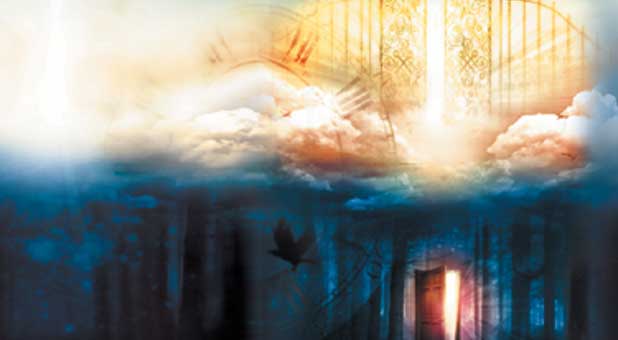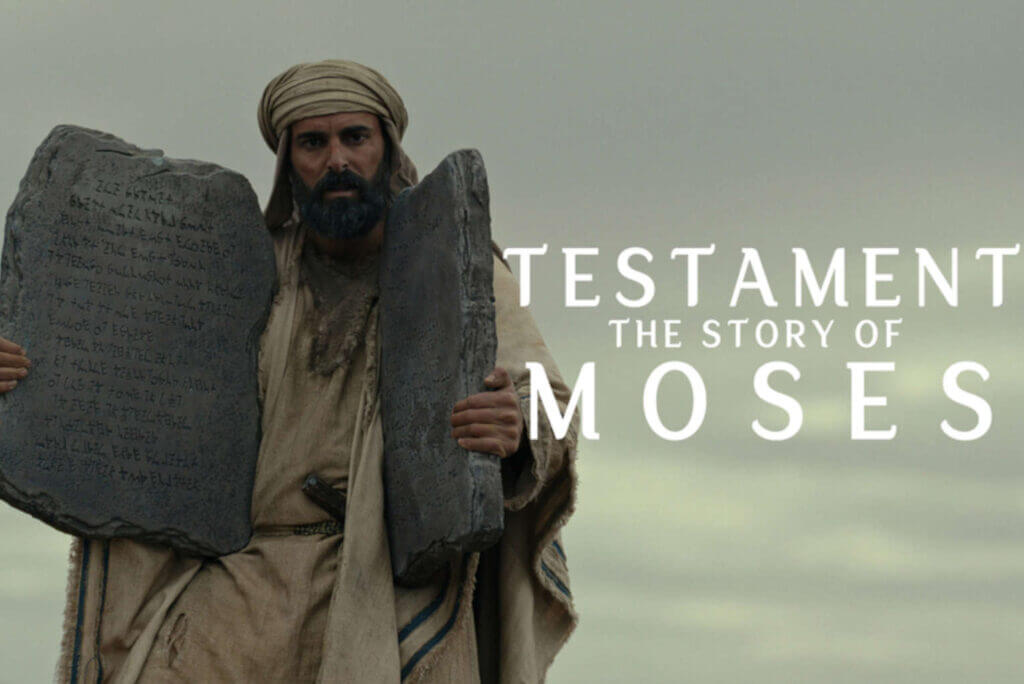Is God speaking to you in the night? Here’s how you can make sense of these often cryptic messages.
Many people who have experienced a spiritual dream may write off the event as some type of weird result of eating too much pizza before retiring for the night. Some believers even have the attitude, “Well, if God wants to show me something, He can just show me!” This brings up a good point: Why can’t the Lord just show you what is going to happen without using all the strange symbolism that often accompanies a spiritual dream? I believe I’ve found an answer to that question.
First, most people dream throughout the night. In dreams we often are with friends or family and others we know—perhaps on a journey, in a church service or on vacation—and it’s just a normal dream. Then one night you have a dream that’s drastically different from the others. In this dream you see dark clouds slowly crawling in the sky toward your house. As you approach the door, there is a large snake lying in the entrance, looking for a way to get in. You see a sword and attack the serpent until he is dead, and then you enter.
When you wake up, you know this was not a normal dream. You realize that in the Bible a serpent is Satan (or an enemy), and the door is the entrance to your home. A sword in Scripture is the “word of God” (Heb. 4:12), and you took a sword (the Word) to attack an enemy trying to get into your home! Thus, the symbolism was interpreted by using the Bible, and the dream is a warning of someone or something trying to get through the entrance of your home. You will need to fight it by the spoken Word of God.
The point is, without the symbolism it would be difficult for you to know if your dreams were just dreams or a dream from God. One example is Pharaoh’s dream, as recorded in Genesis 41:17-32. He saw seven good cows and seven lean cows, seven good ears of corn and seven bad ears of corn near the Nile River.
The interpretation is clear: a lack of rain was coming that would lead to a famine. Grain was planted on a yearly cycle, thus seven stalks is a seven-year cycle. Joseph understood this to be a famine with a seven-year cycle. The symbolism troubled Pharaoh and caused him to search out a man capable of the interpretation. Had it been just a simple dream, Pharaoh’s own wise men could have revealed the meaning (and Joseph would had stayed in prison).
Though at times it may be challenging to the average believer to know if a dream is natural or spiritual, several important guidelines will determine this difference.
First, many natural, or “carnal,” dreams have no particular order and jump from scene to scene, person to person or circumstance to circumstance. On the other hand, a spiritual dream usually has some form of order or progression to it. A spiritual dream also will have symbolism, which was used in both the Old Testament and New Testament.
Symbols and Patterns
In the principles of biblical interpretation there is what is termed the “law of first mention.” This hermeneutical principle states that the first mention of an object, number, color or symbol in Scripture sets the pattern for it throughout the Bible.
Let’s begin with certain biblical numbers.
The number four appears in Genesis when God created the sun, moon and stars on the fourth day (see Gen. 1:16-19). Afterward it is mentioned when Moses wrote that four rivers encompassed the Garden of Eden (see Gen. 2:10). We later discover there are four directions on the earth: north, south, east and west. Thus, from the onset of Scripture, the number four is an earthly number.
Man was created on the sixth day, and the number six has always been considered in biblical numbers as the number of man or mankind.
The number seven is alluded to in Genesis 2. When God completed His creative work, “He rested on the seventh day” (Gen. 2:2). This imagery of the number seven alludes to a cycle of rest, completion or perfection.
Another number commonly found in the Bible is 40, which has represented a period of testing.
Colors and Animals
When Moses was building the tabernacle in the wilderness, God instructed him to use purple, blue, red and white dyed fabrics. Blue symbolizes heavenly, purple is royalty, red is redemption and white is righteousness.
When it comes to metals, three are mentioned frequently in the Scriptures: gold, silver and brass. Gold is the most precious, representing deity. Gold never tarnishes, never needs cleaning, is eternal (never-aging). Silver is a precious metal that represents redemption.
The first created creature that became prominent in the Bible was the serpent, which was “more cunning than any beast of the field which the Lord God had made” (Gen. 3:1). Notice that the Bible does not use a term such as reptile or slithering thing but places the serpent among the beasts of the field. Today when we think of a beast in a field, we picture a bull, a cow or other large animal that roams on pasture land.
However, the serpent was more than a skinny snake. He was subtle, crafty and able to communicate in some manner with Adam and Eve. Because a serpent initiated the first deception, the fallen angel, Lucifer—called the devil and Satan—became a picture of a deceiving serpent.
One of the most commonly mentioned animals in Scripture is the lamb. The word lamb or verses using the word lamb first appear in Genesis 22, when Abraham predicted that God would “provide for Himself the lamb” (Gen. 22:8).
However, the main story of a lamb that connects this precious creature with Christ is the Passover narrative recorded in Exodus 12.
A perfect pet lamb was chosen from the flock. Its blood was sprinkled on the left, right and top posts of the outer door of each Hebrew home, forming an invisible hedge that restrained the destroying angel from taking the firstborn Hebrew. The entire lamb was then roasted, and all its parts were eaten by the family before they departed from bondage for their new homeland. This was a symbol not just of an exodus, but also of a redemption from bondage and slavery. It was a preview of a coming event—when Christ would appear as the “Lamb of God” to take away the sins of the world (see John 1:29).
The Bible uses other symbolism that is often found in a spiritual dream. For example, it speaks of wheat and tares. The wheat alludes to the good seed that produces children of the kingdom. The tares are the bad seed that produces the children of the devil (see Matt. 13).
There are certain animals that I call the “odd flock.” They are the sheep, goat and pig—each representing a different type of believer.
The sheep always refers to individuals or a group of believers who faithfully follow the shepherd. Goats are part of the flocks in the Middle East, but they are separated from the sheep, as they can become difficult to get along with at times. A goat can allude to someone in the flock who has a negative attitude or refuses to obey the instructions of a shepherd. The pig is considered a very unclean animal in Judaism, and religious Jews will not eat any form of pork. In 2 Peter 2:20-22, a pig is a metaphor used to describe a backslider, or someone who returns to their old, filthy ways.
Often the Holy Spirit is symbolized as a dove—and for good reason when we compare a natural dove to the characteristics of the Holy Spirit. One variety of doves is pure white, which represents the purity of the Holy Spirit. A dove is an affectionate bird that expresses its emotions through cooing. It is also a gentle creature, a perfect imagery of the gentleness and affection of the Holy Spirit.
When a dove is attacked, it doesn’t retaliate but simply cries in distress. As believers who are filled with the Holy Spirit, we are instructed never to retaliate against our enemies. The Holy Spirit makes intercession for us in prayer with “groanings” (Rom. 8:26).
In Jesus’ parables, the field where the harvest grain is maturing is symbolic of the world itself. Water is symbolic of the Holy Spirit when He is manifesting within the life of a believer, as indicated when Christ compared the infilling of the Spirit to someone with living water flowing from their innermost being (John 7:38).
God can use dreams to speak to us. When a believer experiences a spiritual dream in which the meaning is veiled with symbolism, the dream can be understood by using the Scriptures to interpret the symbolism. {eoa}
Perry Stone is the best-selling author of numerous books, including Purging Your House, Pruning Your Family Tree and How to Interpret Dreams and Visions, from which this article is adapted.
Read articles like this one and other Spirit-led content in our new platform, CHARISMA PLUS.
See an error in this article?
To contact us or to submit an article






















